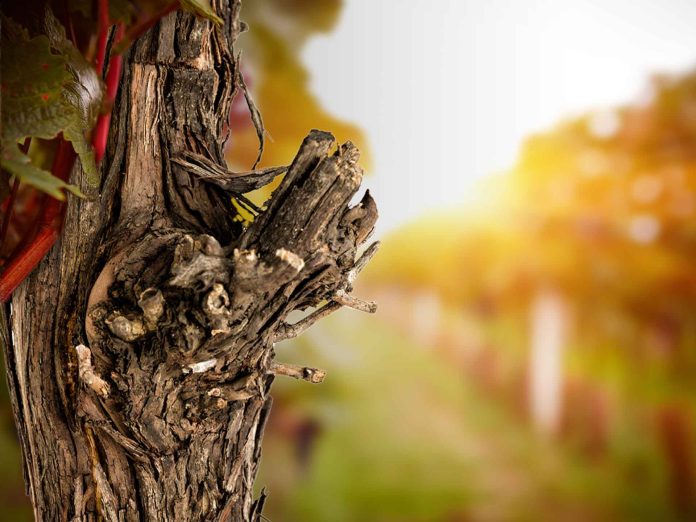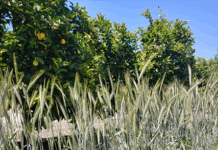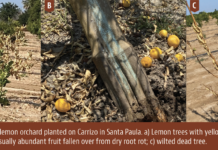Background:
Grapevine trunk diseases (GTD) are currently considered one of the most important challenges for viticulture worldwide. These destructive diseases are caused by a broad range of wood-colonizing fungal pathogens, which primarily infect grapevines through pruning wounds. In most occasions, a single vine can be infected by more than one of these pathogens. The economic impact of GTD can be significant in both young and mature vineyards. Characteristic symptoms include poor vigor, distorted leaves and shoots, shoot and tendril dieback and berry specks caused by fungal toxins produced by some of these pathogens. Perennial cankers produced by canker-causing fungi on grapevine cause spur, cordon and trunk dieback and the eventual death of the entire vine.

Epidemiology
Most of the fungal pathogens responsible for GTD produce overwintering fruiting structures containing the spores of the fungus. When environmental conditions are favorable, these fruiting bodies release the spores into the environment. Spores will land on susceptible pruning wounds and will initiate infection completing their life cycle. In California, research suggests that the majority of GTD spores are released during winter (December to February) following primarily though not always precipitation events. GTD fungal pathogens have a broad host range and in California are known to cause dieback in many different native or introduced tree species and also in other woody perennial crops, including tree fruits and nut trees. Therefore, the source of GTD inoculum (spores) can come into a vineyard from multiple sources.
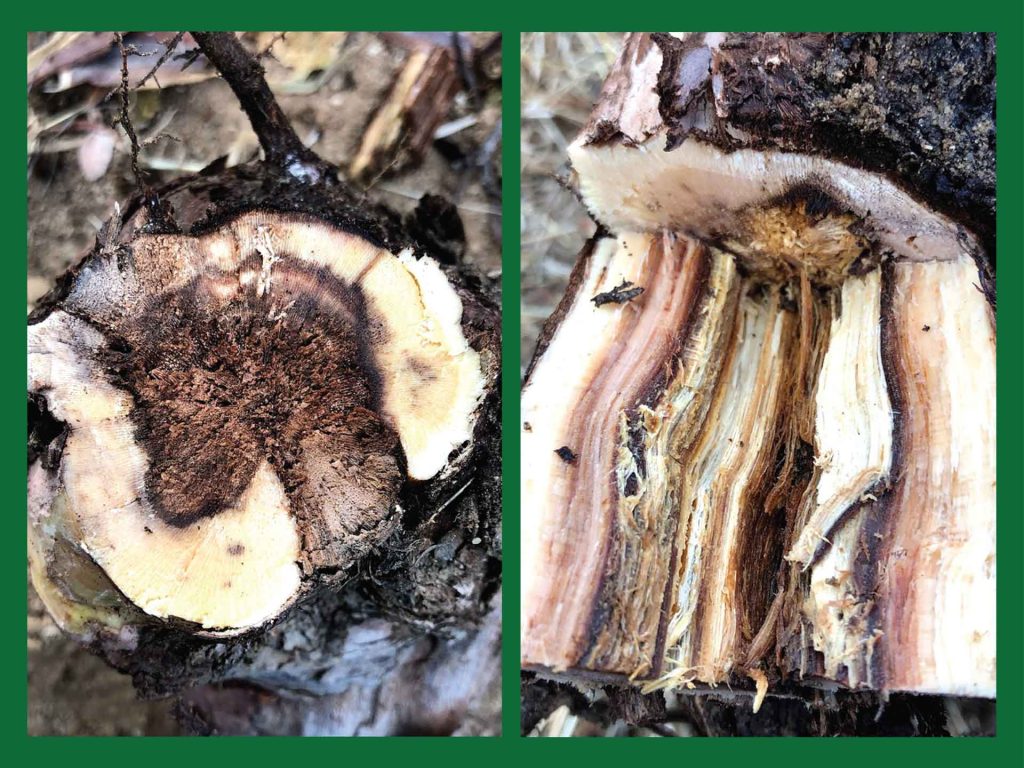
Management in Nursery:
- Treat pruning wounds on mother plants to prevent new infections
- Sanitation in mother fields and during the entire nursery process
- Disinfect grafting machines regularly
- Reduction of the cutting hydration period
- Apply control products (chemicals or biologicals) as a dip after grafting, before storage and/or before dispatch
- Hot water treatment of dormant nursery plants prior to dispatch
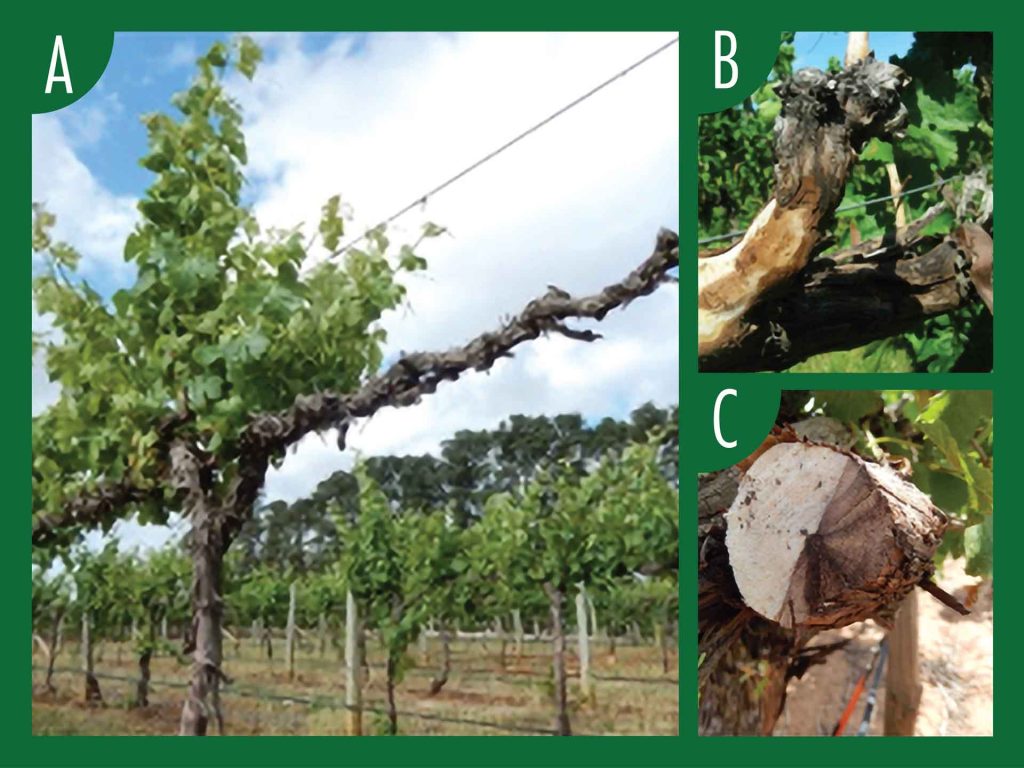
Management in Vineyards:
- Use the cleanest plant material available when establishing new vineyards.
- Minimize stress conditions on young vines after planting.
- In California, delayed pruning has been shown to minimize infection of pruning wounds as wounds are done passed the high disease pressure period of winter months
- In vertical shoot position (VSP) systems, double pruning has shown to facilitate late pruning of large acreage vineyards and thus, reduce infection.
- Prune dead shoots, spurs and cordons below the symptomatic tissue (at least a few inches past the last symptomatic wood).
- Make a clean and smooth pruning cut to speed up the callusing process at the pruning wound.
- Sanitation is very important in the vineyard. Remove pruned and infected plant materials away to prevent the development and increase of GTD fungi overwintering structures in the vineyard.
- Protection of pruning wounds with effective registered chemicals and/or biological control agents is the most effective way to prevent new infections from air-borne spores of GTD fungal pathogens. More than one application may be necessary to protect the pruning wound during its susceptible time period.
- Remedial surgery, where visible infected parts of the vine (spurs, cordons and/or trunk) are removed, can be an effective strategy to eradicate the pathogen from the vine (primarily when cuts are done lower down on the trunk about 20 to 30 cm above ground) and thus, prolong the lifespan of vineyards.
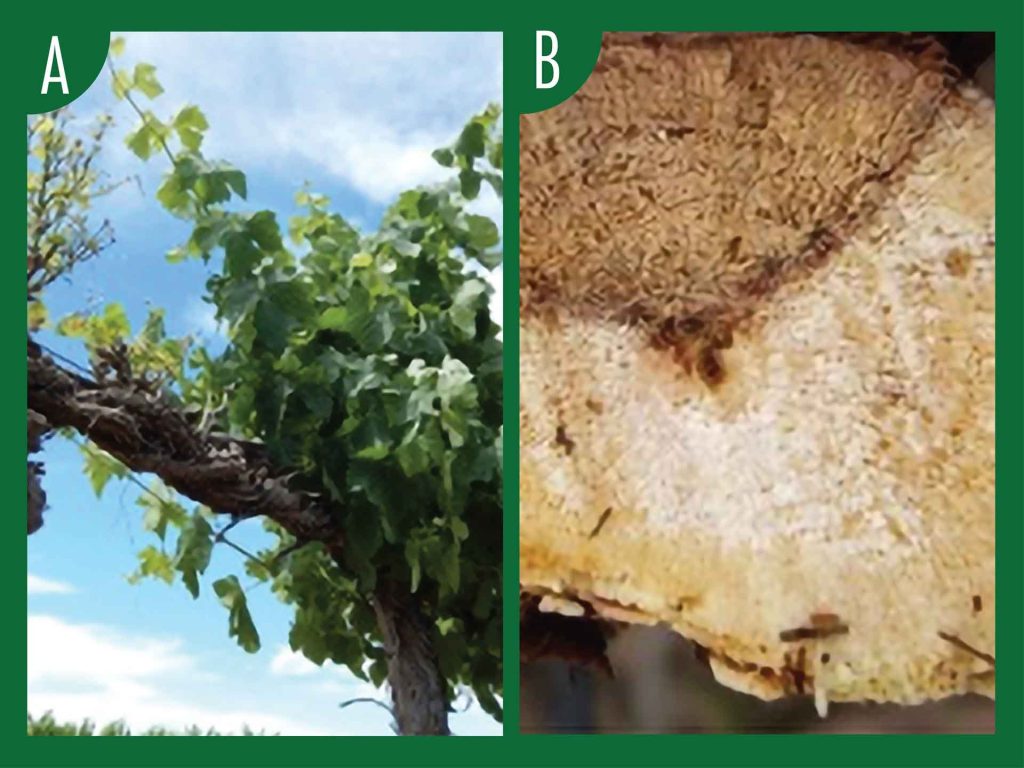
Free access literature:
Gramaje, D., Úrbez-Torres, J. R., and Sosnowski, M. R. 2018. Managing grapevine trunk diseases with respect to etiology and epidemiology: current strategies and future prospects. Plant Disease 102:12-39.
https://doi.org/10.1094/PDIS-04-17-0512-FE
https://ucanr.edu/sites/eskalenlab/






